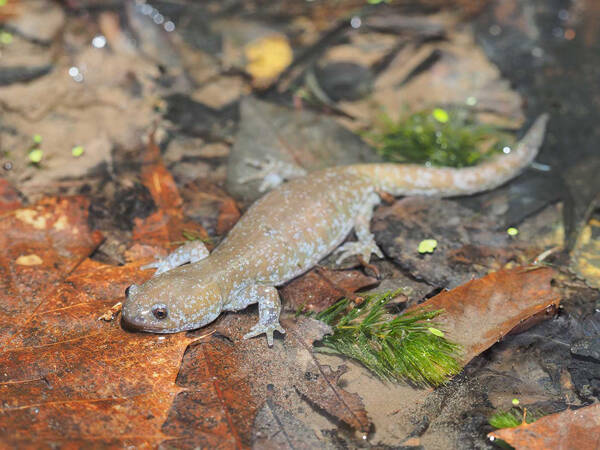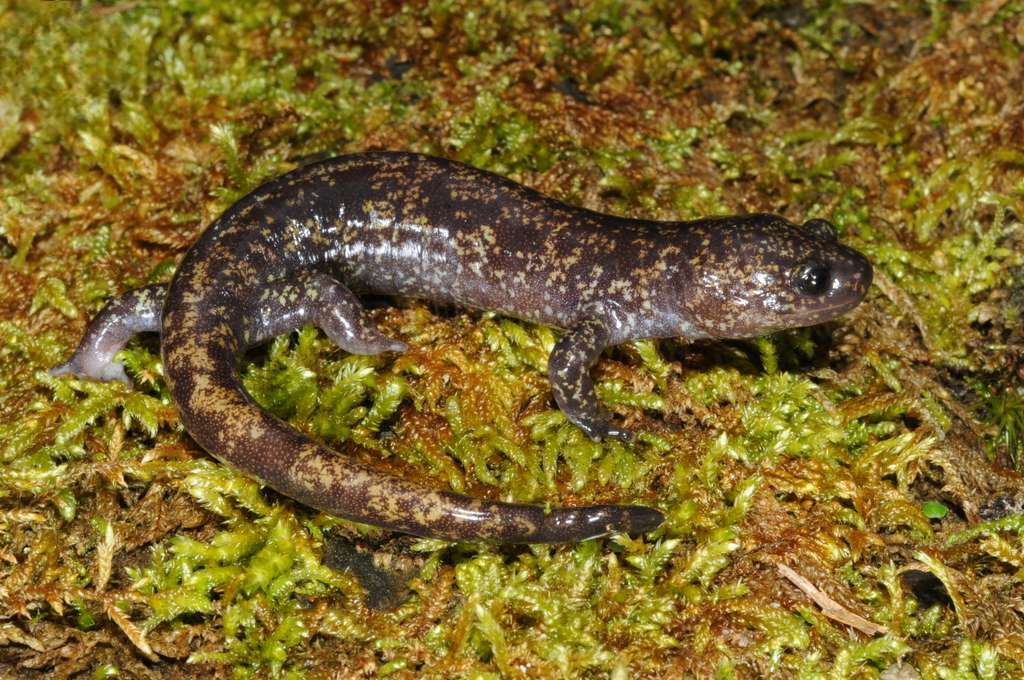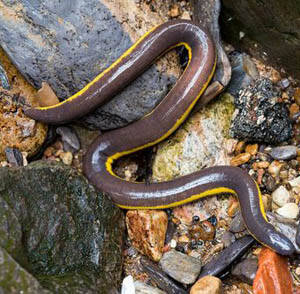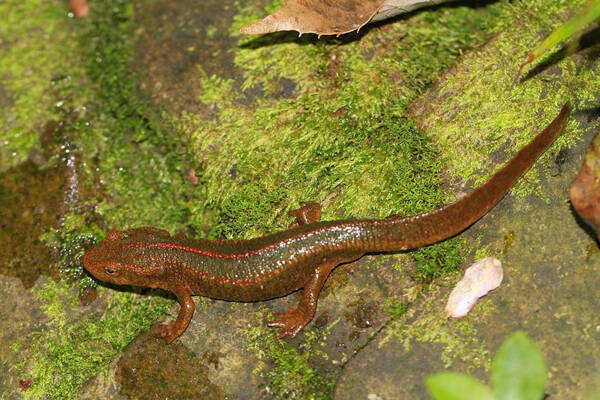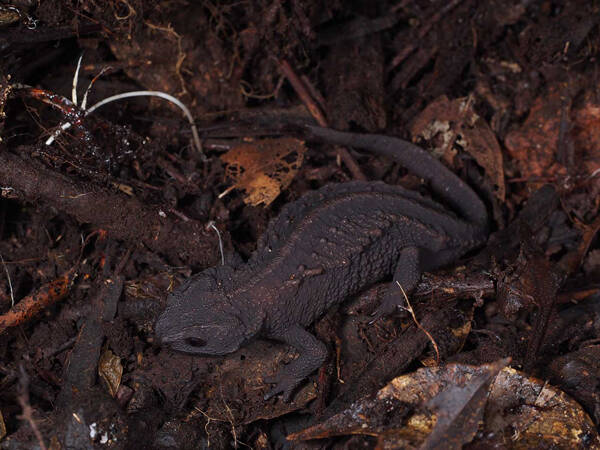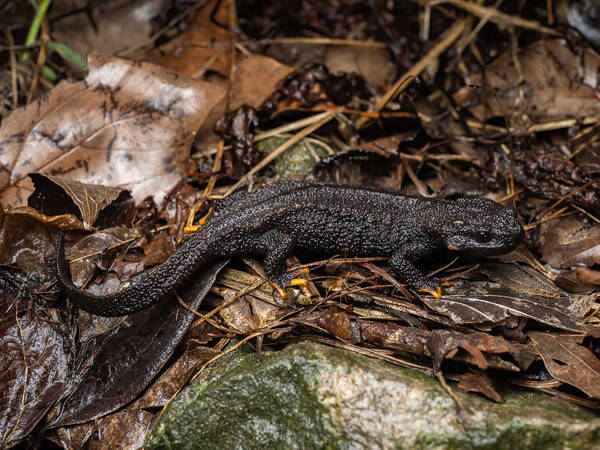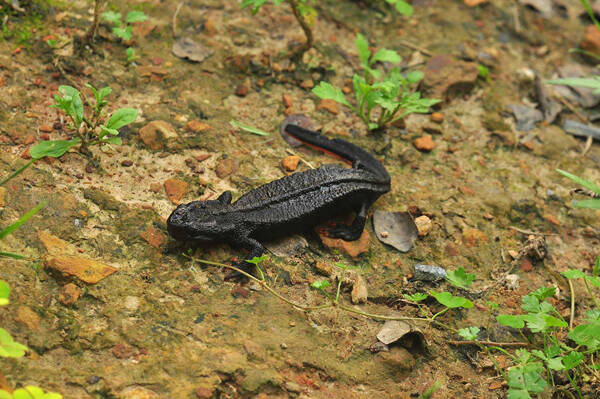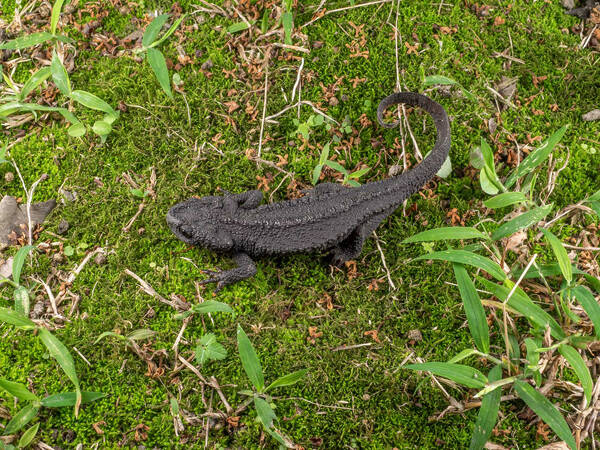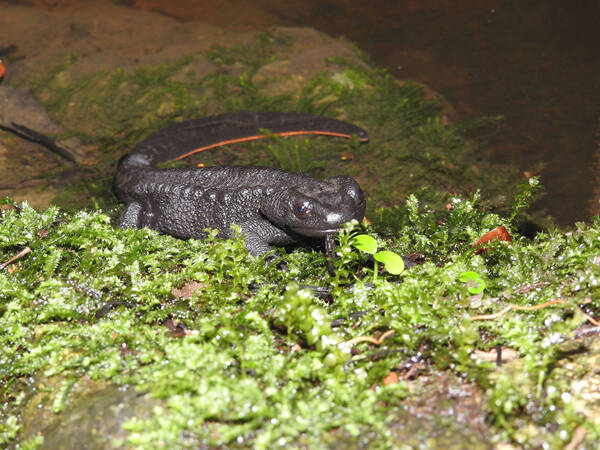Hynobius yiwuensis
IUCN
LCBasic Information
Scientific classification
- name:Hynobius yiwuensis
- Scientific Name:Hynobius yiwuensis
- Outline:Urodela
- Family:Caudata Hynobiidae Hynobiidae
Vital signs
- length:83-136mm
- Weight:
- lifetime:
Feature
The morphology is similar to that of the Chinese salamander, with the ventral surface of the body being grayish white without any spots.
Distribution and Habitat
Endemic to China, distributed in Zhejiang (Zhoushan, Zhenhai, Xiaoshan, Yiwu, Wenling, Jiangshan).
Lives in hilly and mountainous areas with lush vegetation at an altitude of 100-200m.
Appearance
The head is oval, longer than it is wide; the tip of the snout is round and has no lip folds; the trunk is cylindrical and slightly flattened dorsally and ventrally; the base of the tail is nearly round and gradually flattens laterally toward the back; the dorsal surface of the body is generally dark brown, which can turn into light grass green in the grass, and there are usually grayish white spots on the sides of the body; the ventral surface of the body is grayish white with no markings.
Details
Yiwu small salamander lives in hilly and mountainous areas with an altitude of 100 to 200 meters. Except for the breeding season, it lives on land and is often found under loose and moist soil, stones or rotten branches and leaves. Its traces are rarely found on the ground, except after heavy rain in summer, when it can occasionally be seen in the grass.
It feeds on small animals such as earthworms, centipedes and millipedes. This salamander lives in hilly and mountainous areas with lush vegetation at an altitude of 100 to 200 meters. Adult salamanders live on land and are often found under moist soil, stones or rotten leaves, feeding on small animals. The breeding season is from mid-December to February of the following year, and eggs are laid in ponds (pits) or the edge of small reservoirs. The female salamander lays a pair of egg bags, which are connected at the base to form a handle and fixed on dead branches or stones. The egg bag is 150-170 mm long and has fine longitudinal lines on the surface; the eggs are staggered in the cylindrical egg bag, and each egg bag contains 85-96 eggs.
The breeding season is late October, and adult salamanders gradually enter the ponds, puddles or slow streams near the hillside. Spawning begins in mid-December and lasts until February of the following year, and can last until May in Zhoushan Island.
Yiwu Hypsilophis siliquae is only found in a few areas of Zhejiang Province, and its number is small. It is one of the rare amphibians in China. Studying the taxonomic status of Yiwu Hypsilophis siliquae in tailed amphibians and its geographical distribution status is of great significance for in-depth discussion of the evolution of amphibians.
It is listed in the second level of the "List of National Key Protected Wildlife in China".
Note: Illegal killing of wild animals protected by the state will be subject to criminal sanctions.
